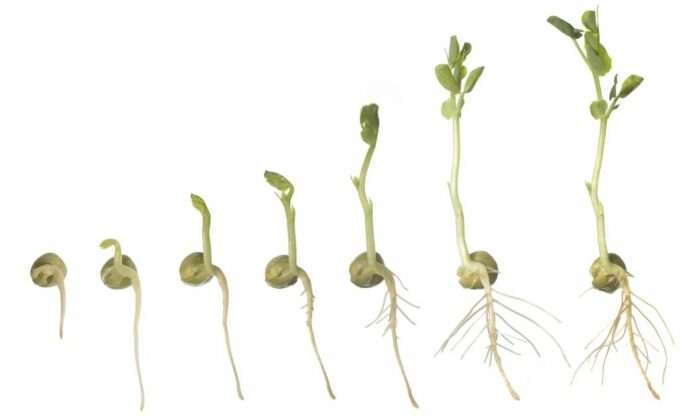K-State horticulture expert offers tips for buying, caring for seed
MANHATTAN, Kan. – In case cabin fever has Kansas gardeners longing for warmer days, there’s good news: January marks an early opportunity to get some vegetables and flowers started.
“January is often a cold and dreary month for many gardeners,” said Ward Upham, a horticulture expert with K-State Research and Extension. “But planning for and starting vegetables and flower transplants from seed can make this a much more interesting time of year.”
Upham outlined the steps needed to purchase and plant seeds indoors in a recent issue of the Horticulture Newsletter, a weekly publication from Kansas State University that is available online and by email.
His recommendations include:
• Purchase recommended, quality seed. The varieties recommended for Kansas are available in a publication from K-State Research and Extension. “Also, talk to your neighbors, friends and your local garden center about what has worked well for them,” Upham said.
• Obtain your seeds from a reputable source. These may include garden centers and seed catalogs. “If choosing seeds from a business that does not specialize in plants, pay special attention to the package date to make sure the seed was packaged for the current year,” Upham said. “Though most seed remains viable for about three years, germination decreases as seed ages.”
• Determine the Date to Seed. You should know the target date for transplanting outside, and the number of weeks needed to grow the transplant indoors. The Jan. 5 K-State Horticulture Newsletter includes a table to help gardeners understand these timelines.
• Sowing seed. Do not use garden soil to germinate seed. It is too heavy and may contain disease organisms. Use a media made especially for seed germination.
Upham said additional tips include keeping seed moist, and growing the seeds in appropriate lighting and temperature conditions. A little TLC also helps, he said.
“Plants react to movement,” Upham said. “Brushing over the plants with your hand stimulates them to become more stocky and less leggy. Try 20 brushing strokes per day. However, brushing will not compensate for a lack of light or over-crowding.”
Move plants outdoors prior to transplanting so that they will become hardened to the sun and wind. “Start about two weeks before transplanting and gradually expose the plants to outside conditions,” Upham said. “Increase the number of hours and degree of exposure over a two-week period.”
For more tips, interested persons can send their garden- and yard-related questions to Upham at wupham@ksu.edu, or contact your local K-State Research and Extension office.
# # #
Sidebar: Starting onion plants indoors
Kansas State University horticulture expert Ward Upham said growing onions from seed is usually preferred because it is often difficult to find species varieties of this common vegetable in sets or transplants.
“Onions are one of the first plants to be seeded for transplanting because this crop takes a significant amount of time to reach transplant size (often 6 to 8 weeks) and because they can be set out relatively early in the spring (generally late March in much of eastern and central Kansas),” Upham said.
Thus, onion transplants should be started in mid- to late-January, he said.
“Onion seed should be placed ½ to ¾ inch apart in a pot or flat filled with a seed starting mix,” Upham said. “Place the container in a warm (75 to 80 F degrees) location until the young seedlings emerge, and move to a cooler location (60 to 65 F degrees) when the seedlings are 1 to 2 inches tall.”
More tips on growing onions and other crops from seed are available in the K-State Research and Extension Horticulture Newsletter.
FOR PRINT PUBLICATIONS: Links used in this story
K-State Horticulture Newsletter, https://hnr.k-state.edu/extension/info-center/newsletters/index.html
Recommended Vegetable Varieties, https://bookstore.ksre.ksu.edu/pubs/L41.pdf
K-State Research and Extension local offices, www.ksre.k-state.edu/about/stateandareamaps.html
K State Research and Extension is a short name for the Kansas State University Agricultural Experiment Station and Cooperative Extension Service, a program designed to generate and distribute useful knowledge for the well being of Kansans. Supported by county, state, federal and private funds, the program has county extension offices, experiment fields, area extension offices and regional research centers statewide. Its headquarters is on the K State campus in Manhattan. For more information, visit www.ksre.ksu.edu. K-State Research and Extension is an equal opportunity provider and employer.
Story by:
Pat Melgares
785-532-1160
melgares@ksu.edu
For more information:
Ward Upham
785-532-6173
wupham@ksu.edu





